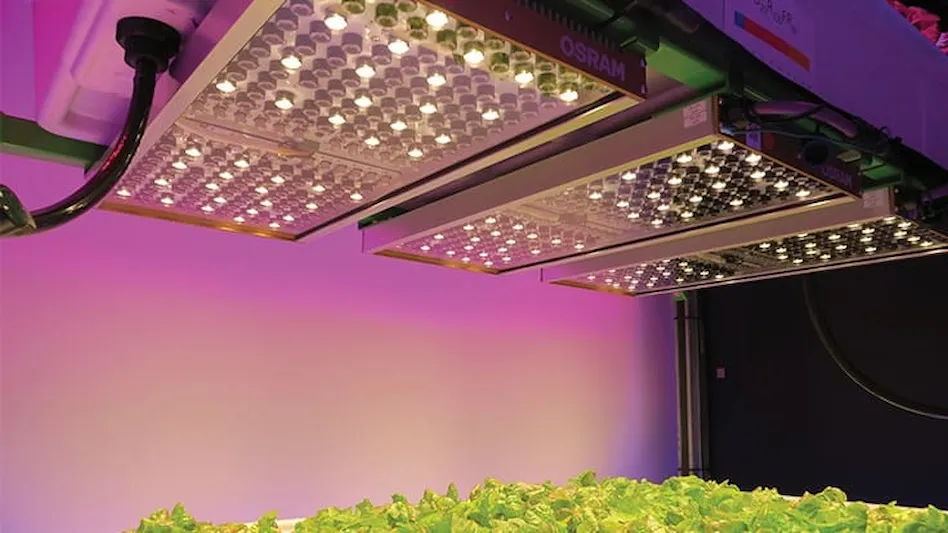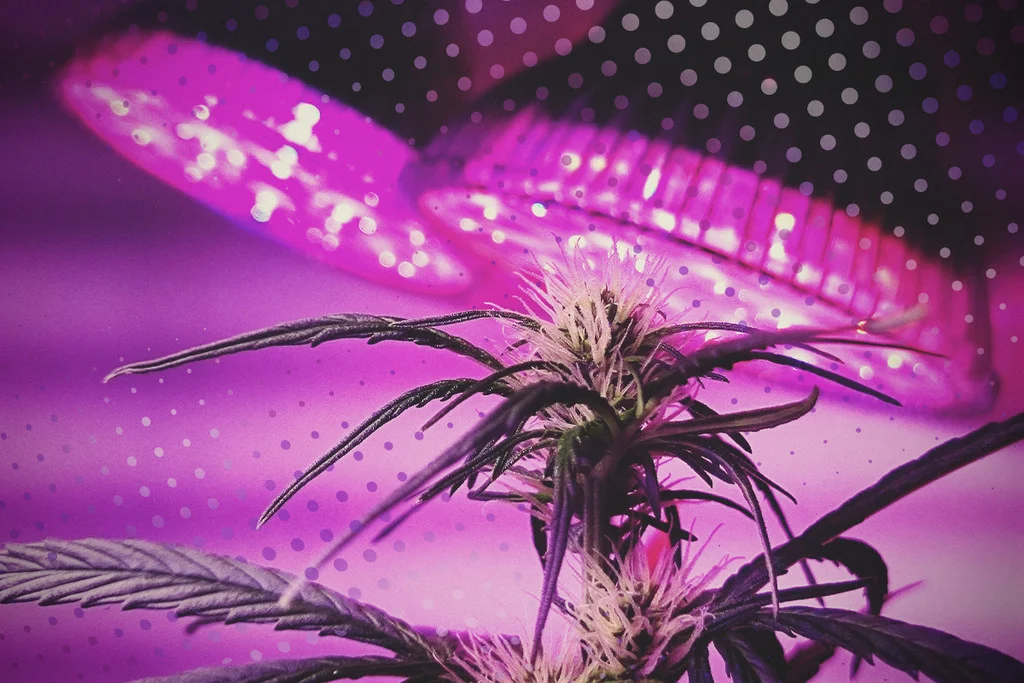For many aspiring cannabis cultivators, the journey to a bountiful harvest begins with understanding the vital role of light. Cannabis, like all plants, thrives on a specific light spectrum and requires precise light intensity throughout its growth cycle. Just like sunshine nourishes plants outdoors, indoor growers rely on artificial lighting to mimic the natural conditions that cannabis craves. But with a variety of grow light options available, choosing the right lighting solution can feel overwhelming.
This blog dives deep into the world of cannabis lighting, specifically focusing on the ever-evolving technology of Light-Emitting Diodes (LEDs). We’ll explore how light affects cannabis growth, delve into the science behind LED technology, and unpack the numerous advantages LEDs offer compared to traditional grow lights.
Light: The Sun of Your Indoor Garden
Light is the single most crucial environmental factor influencing cannabis growth. Plants use light energy through a process called photosynthesis to convert carbon dioxide and water into carbohydrates, the fuel they need to grow and thrive. Different stages of the cannabis growth cycle require varying light spectrums and intensities.
During the vegetative stage, when plants focus on foliage growth, they respond best to a light spectrum rich in blue and white light. This spectrum mimics the light quality of springtime, promoting strong stem and branch development. As plants mature and enter the flowering stage, their light needs shift towards a spectrum dominated by red and orange light, similar to the light quality of fall. This red and orange spectrum triggers bud development and flower production, ultimately leading to a potent and fruitful harvest.
Traditionally, growers relied on High-Intensity Discharge (HID) lights like Metal Halide (MH) and High-Pressure Sodium (HPS) lamps to fulfill these light requirements. While HIDs have been the industry standard for decades, they come with a set of drawbacks, including:
- High Heat Generation: HIDs produce significant heat, requiring robust ventilation systems to maintain optimal temperatures within the grow space. This added heat can stress plants and increase energy consumption.
- Limited Light Spectrum: While HIDs offer some adjustability, their light spectrum is not as fine-tuned as LEDs, potentially leading to wasted energy and less efficient plant growth.
- Short Lifespan: Compared to LEDs, HIDs have a shorter lifespan, requiring more frequent replacements and adding to overall grow operation costs.
These limitations have paved the way for the rise of LED technology in the cannabis cultivation scene. In the next part of this blog, we’ll explore the science behind LEDs and delve into the numerous benefits they offer for growing thriving cannabis plants
Unveiling the Science Behind LEDs

Now, let’s focus on the exciting world of Light-Emitting Diodes (LEDs) and explore the scientific principles that make them a powerful lighting solution for cannabis growers.
Unlike HIDs, which generate light by igniting an electric arc within a gas capsule, LEDs are semiconductor devices that convert electrical energy directly into light. This conversion process is far more efficient, translating into significant advantages for cannabis cultivation.
Understanding LED Spectrum: A Tailor-Made Light Recipe
One of the most significant benefits of LEDs lies in their ability to emit light across a highly specific spectrum. Unlike the broad spectrum emitted by HIDs, LEDs can be designed to emit light at precise wavelengths, catering directly to the light needs of cannabis plants at different stages of growth.
Here’s a breakdown of the key wavelengths within the light spectrum and their impact on cannabis:
- Blue Light (400-490 nm): Essential for vegetative growth, blue light promotes strong stem and branch development, as well as thicker foliage.
- Red Light (630-700 nm): Plays a crucial role in flowering, with red light triggering bud development and resin production. Far-red light (700-750 nm) also plays a role in flowering and can influence plant stretching.
By utilizing LEDs that emit specific wavelengths of light, growers can create a customized light recipe for their cannabis plants. This targeted approach ensures plants receive the precise light spectrum they need to thrive at each stage of growth, leading to:
- Enhanced Growth Rates: Precisely tuned LED light spectrums can optimize photosynthesis, potentially leading to faster growth and higher yields.
- Improved Potency: Tailoring the light spectrum during flowering can promote the production of cannabinoids and terpenes, the compounds responsible for the psychoactive effects and unique aromas of cannabis.
- Reduced Energy Consumption: Unlike HIDs, which waste energy emitting unnecessary wavelengths, LEDs focus light delivery, leading to significant energy savings.
In addition to spectrum control, LEDs offer several other advantages over traditional grow lights:
- Cooler Operation: LEDs generate minimal heat compared to HIDs, reducing the need for expensive ventilation systems and creating a more comfortable environment for plants.
- Longer Lifespan: LEDs boast a much longer lifespan than HIDs, typically lasting for tens of thousands of hours, which translates to lower maintenance costs for growers.
- Environmentally Friendly: LEDs contain no harmful elements like mercury, found in HIDs, making them a more sustainable lighting solution.
While the science behind LEDs is fascinating, the practical benefits they offer for cannabis cultivation are truly remarkable. In the final part of this blog series, we’ll explore the different types of LED grow lights available, delve into considerations for choosing the right LED system for your needs, and offer practical tips for maximizing your cannabis yields with LED technology.
Choosing the Right Grow Light for Your Cannabis Garden

Now, it’s time to navigate the exciting world of LED grow lights and equip yourself with the knowledge to choose the ideal system for your specific needs.
Read- Watering Cannabis: Essential Tips for Healthy Growth
Exploring LED Grow Light Types
The world of LED grow lights is no longer a one-size-fits-all proposition. Manufacturers offer a diverse range of LED systems catering to different grow space sizes, budgets, and plant requirements. Here’s a breakdown of the most common types of LED grow lights:
- Full-Spectrum LEDs: These LED systems combine various wavelengths of light, including blue, red, white, and sometimes additional spectrums like far-red, to provide a well-rounded light recipe suitable for both vegetative and flowering stages.
- Chip-on-Board (COB) LEDs: COB LEDs integrate multiple LED chips into a single package, creating a powerful and efficient light source. COB LEDs are known for their high intensity and deep light penetration, making them ideal for larger plants that require strong light at the canopy level.
When choosing an LED grow light, consider the following factors:
- Grow Space Size: Different LED systems are designed for varying grow space sizes. Ensure the chosen light can adequately cover the footprint of your grow area and deliver sufficient light intensity to the canopy.
- Plant Stage: Opt for a full-spectrum LED system if you plan to grow from seed to harvest. However, if you’re starting with clones or focusing solely on flowering, lights with a higher red light ratio might be beneficial.
- Budget: LED grow lights range in price depending on features, power output, and brand. Determine your budget and choose a system that offers the best value for your needs.
- Additional Features: Some LED systems come equipped with features like dimming capabilities, timers, and built-in fans. Consider which features would be most beneficial for your grow operation.
Beyond choosing the right light system, maximizing your cannabis yields with LEDs involves proper light positioning and maintenance. Here are some additional tips:
- Maintain Proper Light Distance: Ensure the LED light is positioned at the optimal distance from the plant canopy to provide sufficient light intensity without causing stress. Consult the manufacturer’s recommendations for specific distances.
- Light Schedule Optimization: Mimic natural light cycles by providing 18 hours of light during the vegetative stage and 12 hours of light during the flowering stage.
- Regular Maintenance: Regularly inspect your LED grow lights for any damage or malfunction and clean dust buildup to ensure optimal performance.
By understanding the science behind LEDs, exploring the different types of grow lights available, and following these practical tips, you can harness the power of LED technology to cultivate thriving cannabis plants and achieve bountiful harvests.
Conclusion
The journey towards a flourishing cannabis garden starts with understanding the language of light. LEDs, with their precise spectrum control, cooler operation, and longer lifespan, have revolutionized indoor cannabis cultivation. By harnessing the power of LEDs and following the insights presented in this blog series, you can create an optimal growing environment for your plants, maximizing their potential and ultimately achieving the satisfaction of a bountiful harvest.
Remember, the world of LED grow lights is constantly evolving. Stay informed about the latest advancements and explore options that best suit your specific needs. With dedication and the right lighting solution, you can cultivate success and witness the magic of cannabis unfold within your indoor garden.
